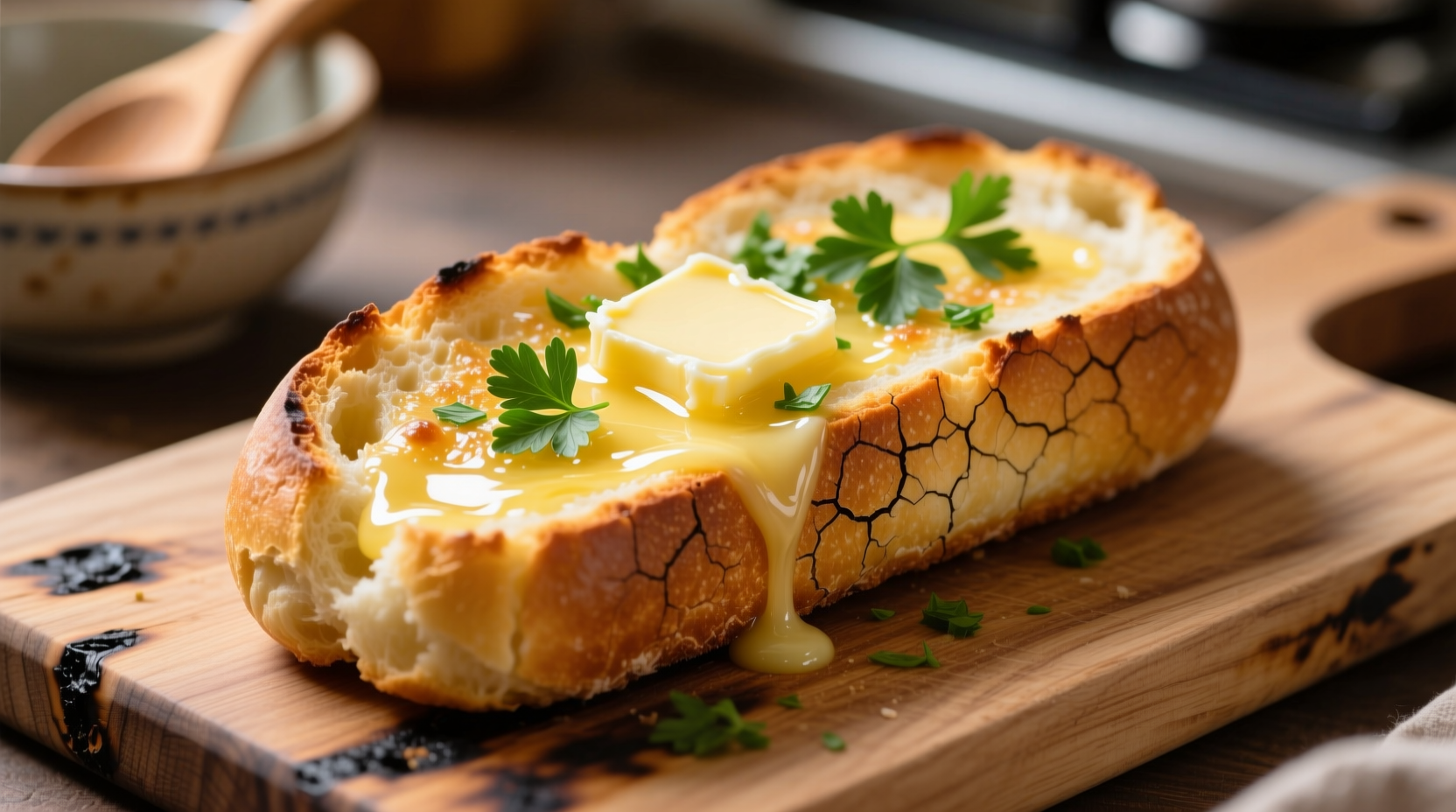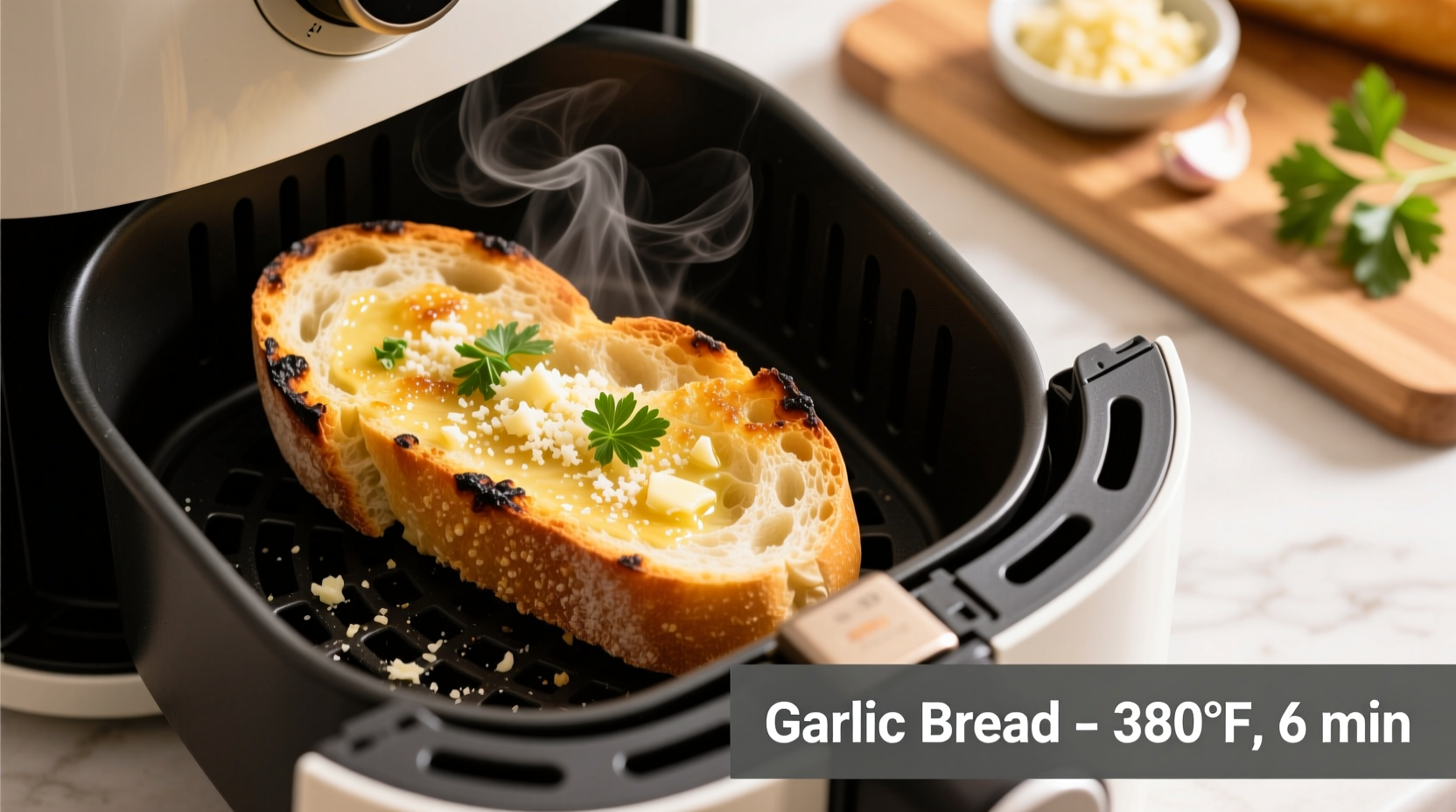The fastest way to make perfect garlic bread in an air fryer is to combine softened butter with minced garlic, parsley, and salt, spread it generously on a baguette cut side down, and air fry at 350°F (175°C) for 5-7 minutes until golden and crispy. This method delivers restaurant-quality results in under 10 minutes with minimal cleanup.
Craving that irresistible combination of crispy crust and soft, garlicky interior but don't want to heat up your entire oven? You've landed in the right place. Making garlic bread in an air fryer isn't just convenient—it's the secret to achieving perfectly toasted bread with maximum garlic flavor infusion in record time. Forget soggy microwave versions or waiting for your oven to preheat; this streamlined method delivers professional results with home kitchen simplicity.
Why Air Fryer Garlic Bread Beats Traditional Methods
While conventional oven baking has its merits, air fryer garlic bread offers distinct advantages that home cooks appreciate. The concentrated heat circulation creates an ideal environment for rapid, even browning without drying out the bread's interior. According to the USDA Food Safety and Inspection Service, air frying typically requires 20-30% less cooking time than conventional ovens, reducing the risk of overcooking delicate bread products.
| Cooking Method | Time Required | Texture Result | Energy Consumption |
|---|---|---|---|
| Air Fryer | 5-7 minutes | Crispy exterior, soft interior | ~1500 watts |
| Conventional Oven | 10-15 minutes | Variable browning | ~2400 watts |
| Toaster Oven | 8-12 minutes | Drier texture | ~1200 watts |
Essential Ingredients for Perfect Air Fryer Garlic Bread
The magic happens with just a handful of quality ingredients. Don't underestimate the importance of using fresh garlic rather than pre-minced varieties—the flavor difference is substantial. Professional chefs consistently recommend using European-style butter with higher fat content for superior browning and richer flavor development.
- 1 fresh baguette (preferably day-old for better texture)
- ½ cup (1 stick) unsalted butter, softened to room temperature
- 4-5 fresh garlic cloves, finely minced (about 1½ tablespoons)
- 2 tablespoons fresh parsley, finely chopped
- ¼ teaspoon sea salt (adjust to taste)
- ¼ teaspoon black pepper
- Optional: 2 tablespoons grated Parmesan cheese
Equipment Checklist
Before you begin, ensure you have these essential tools ready:
- Air fryer (3.5+ quart capacity recommended)
- Sharp serrated knife for bread slicing
- Small mixing bowl
- Butter knife or offset spatula for spreading
- Aluminum foil (for easy cleanup, optional)
Step-by-Step Preparation Guide
Preparing the Garlic Butter Mixture
The foundation of exceptional garlic bread lies in properly prepared garlic butter. Many home cooks make the critical mistake of adding raw garlic directly to melted butter, which creates a harsh, bitter flavor. Instead, combine softened (not melted) butter with minced garlic and let it rest for 10-15 minutes. This allows the garlic's enzymes to develop more complex flavor compounds through a process called alliinase activation, as documented in research published in the National Center for Biotechnology Information.
Cutting and Preparing the Bread
Using a serrated knife, cut your baguette horizontally while keeping both halves connected at one end (like a hinge). This technique ensures even butter distribution and prevents the bread from drying out during cooking. If using day-old bread, lightly mist the cut surfaces with water before adding the butter mixture—this simple step activates the starch retrogradation process, restoring optimal texture.
Air Frying Technique for Perfect Results
Preheat your air fryer to 350°F (175°C) for 3 minutes—this crucial step often gets overlooked but ensures consistent cooking from the moment the bread enters the basket. Place the prepared bread in the air fryer basket with the buttered side facing up. Cook for 5-7 minutes, checking at the 5-minute mark. The ideal finished product should register 190°F (88°C) internally according to food safety guidelines from the FDA Food Code.

Troubleshooting Common Issues
Preventing Burnt Edges
If you notice the edges browning too quickly, reduce the temperature to 325°F (163°C) and extend cooking time by 1-2 minutes. Different air fryer models have varying heat intensities—consult your manufacturer's guidelines for precise temperature calibration.
Fixing Soggy Bottoms
Soggy bottoms typically occur when the bread contains too much moisture. To prevent this, ensure your butter mixture is at room temperature (not melted) and avoid over-saturating the bread. For best results, use a paper towel to gently press excess moisture from freshly minced garlic before mixing.
Serving and Storage Recommendations
Serve immediately for optimal texture—garlic bread's quality degrades rapidly as it cools. If you must store leftovers, place them in an airtight container at room temperature for up to 24 hours. To revive, return to the air fryer at 300°F (149°C) for 2-3 minutes. According to culinary research from the University of Illinois Extension, reheating bread above 150°F (66°C) reactivates starch gelatinization, restoring near-fresh texture.
Flavor Variations to Try
Once you've mastered the classic version, experiment with these professional chef-approved variations:
- Mediterranean Twist: Add 1 teaspoon dried oregano and ½ teaspoon red pepper flakes to the butter mixture
- Cheesy Delight: Sprinkle ¼ cup shredded mozzarella and 2 tablespoons grated Parmesan before air frying
- Herb Garden: Substitute half the parsley with equal parts fresh basil and chives
- Garlic Lover's: Roast whole garlic cloves at 400°F for 20 minutes, then squeeze out the softened cloves into your butter mixture
Frequently Asked Questions
Can I use frozen bread for air fryer garlic bread?
Yes, but adjust cooking time by adding 1-2 minutes. Thaw frozen bread slightly at room temperature for 10 minutes before adding garlic butter to prevent moisture issues. Never apply butter to completely frozen bread as it won't absorb properly.
How do I prevent garlic from burning in the air fryer?
Mix minced garlic with softened butter (not melted) and let it rest for 10 minutes before use. The fat in butter creates a protective barrier that prevents garlic from burning. Avoid using pre-minced garlic in jars as it often contains preservatives that burn more easily.
What's the ideal bread type for air fryer garlic bread?
A day-old French baguette or ciabatta works best due to their sturdy crust and open crumb structure. Avoid soft sandwich breads as they become too crispy and may burn. Artisan breads with higher hydration levels yield superior results compared to mass-produced alternatives.
Can I make dairy-free garlic bread in an air fryer?
Absolutely. Substitute butter with refined coconut oil or vegan butter sticks (not spreads). Add ½ teaspoon nutritional yeast for cheesy notes and ¼ teaspoon onion powder to enhance flavor complexity. Ensure your dairy-free alternative has at least 80% fat content for proper browning.
How many servings does one baguette make?
A standard 18-inch baguette yields 6-8 generous servings when sliced into 1.5-inch pieces. For party portions, cut into 1-inch slices for 10-12 servings. Adjust ingredient quantities proportionally if using larger or smaller bread varieties.











 浙公网安备
33010002000092号
浙公网安备
33010002000092号 浙B2-20120091-4
浙B2-20120091-4